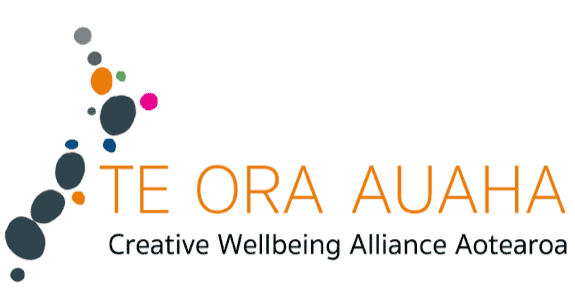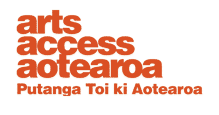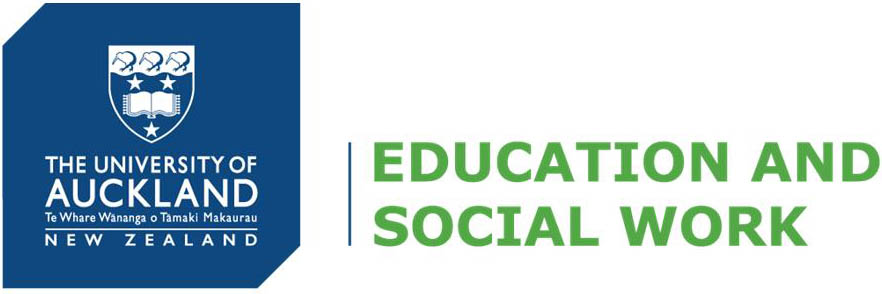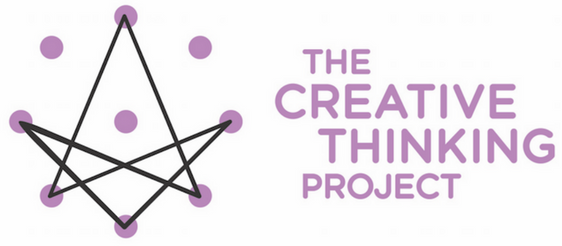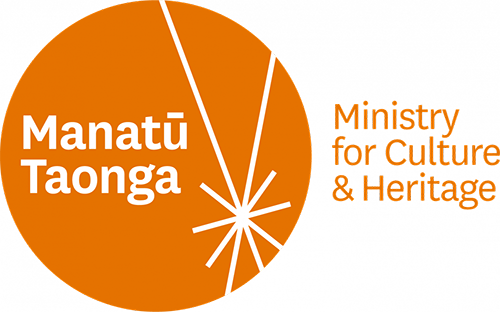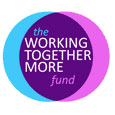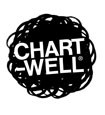“From funny to heart breaking, the stories of people with cerebral palsy and those who advocate for them are told in a new verbatim play called Squeaky Wheel.” - RNZ, April 4th 2021
Listen to the full RNZ interview here.
In 2013 I was in the NICU with my brand new 25-week old premature baby and received the news she had suffered a significant stroke. This was the week I first heard the words cerebral palsy, and ever since I have been advocating as a mother for my daughter to participate in her community, access a diverse range of therapies and interventions, and to receive an education. Over the years I connected with many other parents who were a few years ahead or behind with their own children and I was motivated by their stories of advocacy. The stories shared were often rich, emotional and humbling, and each time I felt compelled as a theatre director to figure out how to honour these voices one day in the future - if I could ever find time as a busy mother. Squeaky Wheel is a new verbatim theatre play that premiered as part of the extended Auckland Fringe Festival in 2021 and is a culmination of perspectives of those living with cerebral palsy. My workload is excessive with caring for Ella full-time, managing her appointments, interventions, rehabilitation and schooling, I realised that there was always going to be a reason to put this play off.
For me the true moment of inspiration for Squeaky Wheel came about when my daughter started her transition from ECE to mainstream school. This was pivotal because having a child with complex health and medical needs, school was a scary place. Throughout her ECE years, I felt incredibly supported, and connected with both a wide community of parents, as well as teachers, therapists and early intervention staff. Primary school was next level - confusing, fast-paced and for the first time in my life I was having significant disagreements with management and school staff about how to engage my daughter in school. I felt compelled to speak out about the injustices we felt and tested many platforms to advocate for my daughter; I wrote to the board of trustees, Principals, MOE officials, the Disability Commission, Cerebral Palsy Society, local MPs, the human rights commission - I even wrote to our Prime Minister. I was one voice singing a song that many others sang before me. And I knew, heartbreakingly, that many others would walk afterwards.
I was helpless facing the system that moved so slowly and felt archaic in its delivery of an inclusive mainstream environment. There were doors she could not get through, school mobility car-parks were taken by dental clinics and tradespeople, toilet modification approvals took 18 plus months, my request for her attendance full-time was regularly ignored by senior management and waved away because of lack of ministry funding. And, unbelievably, I was regularly asking why she wasn't sitting with peers, why she wasn't playing in the playground, or taking part in cross country (in a modified way), or why school trips hadn't been adapted for her to be able to access activities. I changed my daughter's school three times over 18 months until I found the right fit for her, the right leadership, and a culture where they focussed on her participation and engagement.
The idea of a play was still circulating in my mind as I juggled my whanau’s needs, health and disability supports and my PhD studies. At the end of 2020 I found myself frustrated with the representation of Sia’s film Music, which was infamously dedicated to the autism community. The social media outcry about the lack of inclusivity and representation in this film ran deep with individuals, families and professionals from all over the world. At this moment I knew we could do better, and I felt that it was time to just take the leap and begin to create Squeaky Wheel to explore these perspectives. Identifying myself as an advocate and ally to the CP community and having solid relationships with many other allies I felt that I had a positive foundation to start from. My PhD studies focus on theatre as a tool for social change, and the ethics of care and passion I have as a theatre director in listening to people and honouring their voices gave me the confidence to get started. At the end of 2020 the sun was shining one morning and I decided to register for the 2021 Auckland Fringe Festival and dive into the process of initiating the project.
I spent the summer connecting with social media groups and the Cerebral Palsy Society asking for participants to be involved in a new play about advocacy. I approached friend and colleague Tansy Hayden, a fellow acting graduate of Toi Whakaari: NZ Drama school, and she quickly agreed to be part of the project. This moment was pivotal as it opened up a conversation about verbatim theatre, what Tansy’s role would become and how we would work through performing both physical and speech impairments of others. It was clear Squeaky Wheel would never be able to respectfully explore inclusion on the stage without a performer with cerebral palsy. Amy Hogan was an acquaintance of mine, an advocate and experienced public speaker who works at the Cerebral Palsy Society who has the condition. I contacted her to meet and pitch the idea and was absolutely thrilled when she agreed to become a cast member. This would be Amy’s first ever experience as a performer on stage. And thankfully, Amy also agreed to bring Mary, her assistance dog on stage to support her where needed.

Our early pre production meetings were mostly on Zoom and chat, but very quickly we realised the three of us had an authentic view of society in terms of disability advocacy. Amy represented lived experience, myself an advocate or ally, and Tansy represented what we referred to as the mainstream. What we meant by mainstream was the rest of society who were on the outside of the cerebral palsy community, who had limited knowledge, sometimes fear, and a view of the world that did not always take into account those living with diverse needs. This was so integral to the play’s development, because often interviewees used disability jargon and referred to services and medical procedures so comfortably we had forgotten that it was a different language for many. So we prepared to share, advocate and educate through Squeaky Wheel.
I felt the thread of social justice and advocacy would create a solid narrative and perhaps we would then weave in and out of different areas including education, accessibility and inclusion. In this way I would be able to hear from people directly and figure out what the community wanted to share, as opposed to simply my own experiences as a mother driving the narrative. My interview spots filled up and by mid-January I had recorded over eight hours of interview material, either in person or via Zoom from people all over Aotearoa. I spoke to those living with cerebral palsy, their parents and siblings. It was very early on that I received strong feedback about the ways cerebral palsy should be represented on stage, but opinions on how differed greatly between individuals. The National Theatre had released a YouTube video about the ethics of verbatim in 2014 and as a cast we reviewed their ideas and concepts.
Watch 'The ethics of verbatim theatre' video here.
It was evident that there could be no other way but to give each interviewee the freedom and choice of how they would be represented on stage; by someone with a similar disability to themselves, a neuro-typical actress, or any other way we could develop together. In this instance we began using video, captions and audio recordings to engage different media elements interacting with the live performance to include all different perspectives. I was not entirely sure yet what Squeaky Wheel was really about or how it would look, but these decisions were pertinent to how we could continue.
It was key for interviewees to understand the form of verbatim theatre, and how it not only performs the real words of individuals, it also encompasses their physical movements and speech patterns. I have been inspired by how verbatim can challenge audience perspectives when we see one performer’s body perform contrasting experiences and opinions. Squeaky Wheel was also asking audiences to contrast how different our bodies could be with disability centre stage. I was blown away by the difference in opinion, acceptance and confidence of our interviewees. Many were comfortable with our cast making those decisions on their behalf and allowing us creative licence to achieve what we were trying to. This was a huge step forward in both trust and the ethics of care, and we felt humbled but also apprehensive about what we were doing.
Amy Hogan shared a pivotal reflection at this point during our early discussions. As we teased out content and found connections between the interviews, Amy commented how much of what we were sharing on stage required a sense of bravery. Amy felt the key stories about systems letting interviewees down, the realities of what we were having to advocate for, public abuse or even abandonment by whanau and support services were rarely discussed in public spaces. So to feel apprehensive or afraid meant that we needed to be brave to draw it all together and show it. We knew that these were all true stories, all real experiences and all recent happenings. Almost every interviewee commented at the end that had they been interviewed the week before or after, an entirely new advocacy story would have been shared. As one mother so aptly put it “advocacy is a full time job”. But was just being brave enough to represent disability stories our intent? We were, and still are, constantly reflecting on what our purpose is.
One of our interviewees with lived experience of cerebral palsy also works as a speech and language therapist in the disability sector. I contacted her early in the developmental stages to ask her views on what we were trying to do. She wholeheartedly supported the project, and during her own interview which was performed in the festival production shared the following:
“The times I see disability represented in the media is sorta like a um
A pity fest y’know?
Or an inspirational like um
Tale about someone who has overcome something that
Look how hard it is for them
And we should all feel better about ourselves because we don’t have to experience that
(laughs)
You know, you kind of just want real stories from real people”.
Interviewee, Squeaky Wheel
The challenges we faced were aplenty in regards to the rights we had for stage representation of a disability particularly with verbatim theatre being so specific to the delivery. We were always asking what parts were appropriate for a neurotypical actress to perform in terms of speech and physical impairments, and then further, how someone with cerebral palsy was going to present both neurotypical and impaired interviewees on top of their own physical abilities. I don’t know if we ever really reached a clear cut decision on this for the whole project, however the content of each story and the requests of each interviewee grounded all of our creative decisions on each individual basis. And this was enough.
Amy Hogan was pivotal in relaying the importance of the messages we were sharing, and the comfort she felt in being a performer in her own right. This reassurance was often needed, particularly as some stories brought me to my knees, as well as many making me laugh out loud with both absurdity and delight. These stories touched me personally as I could recognise some in my life with Ella, and the others seemed to reference the future that might be ahead.
As we began tying threads of stories together and I was making parallels between interviewees and our own thoughts and experiences, I realised we had a core element missing that could help tie the fabric of the work together. I contacted Charlotte Thomas, a graduate of NADSA, family member and new Mother to baby Pippa. My cousin had seen my journey into motherhood and had a perspective of cerebral palsy of an intimate observer and ally. Charlotte’s role was to reflect on the life of a mother with a baby with a disability, as well as connect threads of how we made Squeaky Wheel with the decisions and input from our interviewees. It was also practical as a technical support person on stage who would not only run the sound and video display, but support our performers if they needed it. We also ran with a metaphor an interviewee had shared, as she compared CP like the sea “It’s different every day - I can’t control it, and I can’t direct it”. We had a four month old baby, an assistance dog, three performers on stage and an interviewee waiting in the audience, deciding if he would perform himself or not. So we never really knew what our show was going to look like each time either!

Once Charlotte’s part was created we spent time developing material to link and strengthen our transitions between subjects such as “Making Sense of Language”, “Advocacy”, “Disconnected” and “Inclusion on Stage”. We utilised material from interviews that were not used in our final script with insight from myself as both a mother and director to create her parts. Charlotte also readily agreed to perform on stage with her four month old daughter Pippa, who played the young version of my daughter Ella. We had hoped by showing the mother-baby relationship on stage as one of care, love and response could be a representation of what many of the interviewees echoed as they spoke of advocating for their own children. Having such a prominent female presence on stage as well as a persistent perspective from mothers, it was inevitable the piece fell into feminist realms. Although we embraced this, we felt strongly that it was a clear representation of the realities facing our communities when parents, predominantly mothers, also become care-givers and nurses to their children. This is an overwhelming position to take on and a few interviewees commented on this with statements like “Well you had the kid so it’s your job you know”; and “well if we had of been given the support package four years ago when we needed it, maybe I wouldn't have resented my husband because he could go to work and maybe we wouldn't be getting a divorce”. These thoughts and reflections from our interviewees showed the pressures and inadequacies of the disability sector that divide individuals and gender and invalidate basic human rights.
I felt an internal battle ensue about how much of my own life and experience would impact the show as I did not feel that an autobiographical account was fair for those interviewed. As we looked at how the form of the play came together weaving between stories the new role of Director/Mother became more necessary to make sense of the segments we had chosen to share. We also began deconstructing the expectations of the theatre space by having our performers play roles between stage and page. We began weaving between the theatrical world of the play to help scenes make sense, and the real life of where we were and who we were. Each show Charlotte asked Tansy and Amy to comment on their own views about putting the play together, and each show they improvised and shared their thoughts. As a director I saw them shift from a myriad of performed identities to themselves within the verbatim framework, and I felt it added a sense of depth and thoughtfulness to what we were doing.
As our budget was zero, lighting was not an option, so an intimate two row audience was set under the blaring lights of the Cerebral Palsy Society Office and the following week, the Auckland Old Folks Association. Audience feedback was that at first they felt confronted by the space and being “seen”, but then as they settled into the 60 minute show the lights being on felt that they were part of it. If I try to establish how we make theatre for social change I am leaning towards work that allow audience members to become activists and change-makers; but by sitting them in the dark only reinforces the divide between themselves and the story. Many of our interviewees came along to see the show, and it was an absolutely beautiful moment when an actor made eye-contact to acknowledge their story. There were tissues, smiles and for me, I felt a sense of pride in our work during those moments. I do not think we have tackled the idea of inclusion on stage comprehensively, nor how we can refocus and attend to stories of disability, and make spade for those with disability on stage. I do think that Squeaky Wheel begins to ask these questions and make statements and offers from the people it impacts. Our purpose for the 2021 Fringe was to simply share the difference in perspectives, but it became complex, rich and humbling.
One interviewee, Trish McQueen, shared a confident and direct opinion that she would only perform herself on stage. In between Auckland’s lock-down in early 2021 we were able to get to the Kapiti Coast to film her segments in person. Ultimately Trish became both a direct contributor and fellow cast member of Squeaky Wheel. Her interview took place via Zoom, and after deciding which parts we would include, I transcribed her material into a working script. Trish spent a few days rehearsing her own parts along with reviewing her initial interview video before Charlotte filmed her in Kapiti. Trish was clear that she would perform herself, and although she preferred to be on stage live, it was not economically viable at that point in time. Already we had postponed because of the first lock-down, and now we were required to perform the shows across two weekends for availability of the venues. It was logistically challenging to some degree, but the key was Trish’s intentions and beliefs were heard. Trish had wanted to work with a voice or acting coach, or even a speech and language therapist to help with clear pronunciation and this is something we intend to do in the future. It was important for Trish to be seen and heard as herself, which meant no subtitles or any kind of translation of her parts. I was so moved by Trish’s confidence and clarity with who she is and I hope, as a mother, that my Ella can have that much certainty in herself when she is older.

A second contributor with lived experience, Murray Warring, had a different opinion in his representation. He was happy to perform on stage with captions if he had the confidence to get up on stage on the day. But if not, Murray did not want any of his speech or physical impairments to be presented as he felt it would be too traumatic for him to see. For Murray we approached a voice actor, Paul Harrop, who studied Murray’s interview sections and then audio-recorded Murray’s parts. We wanted an essence of Murray, but for Murray, it was his story that was important - not his disability. Each performance of Squeaky Wheel Murray was able to choose how he was to be presented in the moment - via a pre recorded audio bite, or his own voice on stage. It brought huge grins and tears to all of us when Murray bravely wheeled himself to centre stage on the very last show when his parts were played over the speaker - owning his words and experiences publicly.
Both Trish and Murray’s perspectives presented a new realisation about inclusion; it wasn't simply about society and the community not being ready, sometimes the individual was not ready either. This was validated by a parent who, in her interview, thought through how she would feel if her daughter’s disability was represented verbatim on stage. I recall her saying “You know what it is? It would be too confronting for me. I don't see her disability every day, I just see my daughter. Seeing her represented on stage like that would be hard because I simply don’t see it”’. So the freedom and choice of how to be represented was just as important as the stories we had decided to select because people were all at different degrees of confidence, acceptance and readiness. The ethics of care was greatly important to offer respect as well as to find the courage to share and showcase our challenges in public.
Squeaky Wheel was incredibly honoured to pick up the PANNZ Auckland Fringe Award and the Whangarei Fringe Northern Opportunity. These awards have given rise to networking, publicity and the opportunity to take Squeaky Wheel to the Whangarei Fringe Festival in October 2021. The Cerebral Palsy Society received feedback from members about being able to access the show, so we hope these opportunities provide a stepping stone to taking the show around Aotearoa. Specifically touring the towns of those who contributed to Squeaky Wheel. We have also been lucky to receive a donation of a disability vehicle hire from Rod Milner Disability Specialists in Auckland for a greater North Island tour in 2021 and 2022. Currently our cast are resting and refocusing their energies on their paid employment and studies while we gather feedback from audiences on Squeaky Wheel to identify what might be missing and what may need a re-crafting. Once we gather this we intend to redevelop the piece to encourage more activism from the audiences we share with to ignite compassion, change and awareness around the disability sector to build bridges between those with lived experience and the allies we require to change our world.
LATEST POSTS
- Squeaky Wheel - from funny to heart breaking
- It’s been a busy time
- Te Tahua Whakahaumaru Creative Arts Recovery and Employment (CARE) Fund
- Now, more than ever
- Mixit: keeping creativity and laughter alive during lockdown
- Te Rito Toi: The Twice Born Seed Public Lecture
- Moppy Mayhem!
- ITAC Online Think Thank
- Opportunities lost and opportunities found
- Celebrating Everyday Creativity (and asking what change needs to happen for the full value of the arts to be understood and activated?)
- Virtual meet-up - researchers in arts, health, wellbeing and social change
- Māpura Studios - Artfully confronting our fears and worries together during the lockdown
- Home Ground: Comfort and support during ‘strange and uncertain times’
- Caluzzi Cabaret - Bringing sparkle and joy to a driveway near you
- CTOA: Connecting through music amidst a pandemic
- Recent research and resources
- Centre for Social Impact Survey
- Reimagining circus for a quarantine
- Te Rito Toi Resource
- Thankful for art in Ōtautahi
